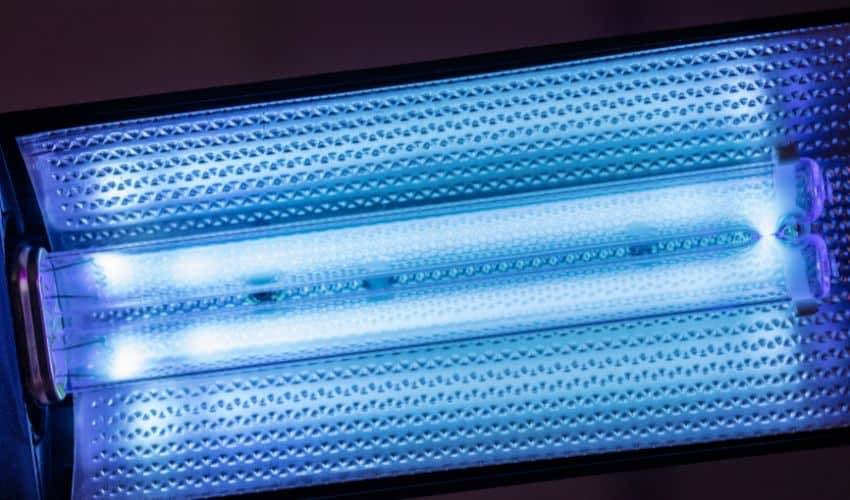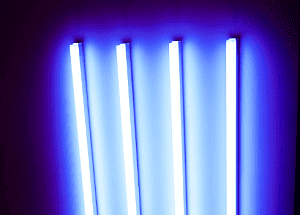Does UV light kill bed bugs? It’s not a good idea to exterminate them with UV light. Although it’s not the best treatment option, utilizing a handheld bed bug spray is preferable to using UV. When there is any form of light nearby, they burrow back into their hiding places far too quickly.
Keep on reading to find out how you can use UV light against these annoying insects. You will also find an instruction for detecting and killing bed bugs with UV light in this article.
[wpsm_titlebox title=”UV Light Usage for Bed Bugs” style=”main”]
These creatures cannot be killed by UV light, but you can use it to both identify and deter them. Shine the light slowly along every surface and crevice to check for these insects. If you find any, either crush it with a paper towel or spray it with an insecticide designed to kill bed bugs.
[/wpsm_titlebox]
Does UV light kill bed bugs?
While UV light is suitable for identifying and deterring bugs, you should remember that it won’t effectively kill them. You might be aware that they prefer the dark and will try to avoid being exposed to light at all costs, but there is no proof that exposure to light can kill them.
The primary cause is a temperature rise. To create enough heat to kill bed bugs, you should use a UV lamp on them for quite some time. In addition, they are photosensitive, like many other bugs, so UV light can frighten them and make them flee in another direction.
However, that doesn’t imply that employing a UV lamp would be wise. There are sufficient reasons against its use:
- Bed bugs might react to UV light in the same way they do to ordinary light;
- The pests cannot remain stationary and exposed to the elements for that long;
- Long before the UV light had a chance to do its full damage, they would flee;
- Some of them might hide during the entire procedure. They wouldn’t be affected in any way;
- They might hide in places that you are unaware of. They might be residing in your furniture while you are preoccupied with your bedding.
You can eliminate these insects by using a mixture of heat (at least 120 degrees Fahrenheit) and contact or residual insecticides (such as powders) to all furniture, cracks, and crevices. If you only start getting rid of them and want to make sure that the used methods work, regular inspections under a UV light will reveal even the most concealed bed bugs in any of their phases of development.
[su_youtube url=”https://youtu.be/TTzqJlvbFak”]
Is it possible to detect bed bugs with ultraviolet light?
Using UV light for bed bug detection is one of several technologies to identify the presence of these pests. It is possible because their outer layers fluoresce when it’s on. The effectiveness of the tool for detecting these insects depends on the effort put into thoroughly combing over every surface and every spot.
When looking for them using a UV light, it’s important to carefully scan every surface to locate an active infestation. What do bed bugs look like under UV light? The adult species are visible to the naked eye. They are 6-7mm in length, oval-shaped, and flat.

How to detect and kill bedbugs with ultraviolet light: Step-by-step guide
If utilized properly, UV light can still be a helpful addition to other methods of eliminating bed bugs. Therefore, I will demonstrate more in-depth procedures to assist you in getting rid of them. It’s a tough fight to rid your home of these insects, but I hope these tips will help.
Step 1: Arrange the room
Before you start looking, you should clean up your apartment. Clear up any clutter. If you store books, clothing, or boxes beneath mattresses or other hiding spots, you need to remove them and put them in plastic containers. Seal all possible escape routes.
To successfully exterminate bed bugs, you must first prevent them from escaping in any way they can. The most crucial detail is located under the doors. Cover it up with some clothing. They can use any openings in the wall or sideboard as an exit route. Position the bed in the center of the room. Keeping the bed in a separate room from other pieces of furniture is the best way to stop its spread.
Step 2: Detecting bed bugs with a UV light
Not only should you look for actual bed bugs but also for their shed skins, eggs, droppings, and nests. Everything becomes fluorescent when exposed to ultraviolet light. Get rid of the linens and seal them in bags. You can also place them in a transparent plastic container for subsequent inspection of your bed linens.
The bed itself, including the mattress and frame, is where you should spend most of your time detecting bed bugs with UV light. Inspect the underside, sides, and back of the mattress, as well as any zippers or buttons by flipping it over. Any crease in the mattress might serve as a covert hideout. Turn the bed over and look at the underside once you check the mattress.
Places like joints, holes, and gaps require special attention: In these areas, they produce their offspring. Continue searching other pieces of furniture in the room for any hiding spots. The bedroom is an ideal place to get started before venturing out into the rest of your house.
Step 3: Trap the bug infestation
You have to capture bed bugs once you identify them to get rid of them. Using a vacuum cleaner to capture these insects is quick and simple. Run the vacuum over all flooring, baseboards, box springs, frames, and other furniture where bugs are likely to hide. Seal the vacuum bag and throw it away. After that, carefully clean the vacuum.
Step 4: Kill bed bugs
Chemical-free extermination of these creatures is also a reasonable step to consider. To clean bedding and clothing, run the washer using high-temperature settings for 30 to 40 minutes. Next, dry it for around 30 minutes using a dryer set to its maximum heat setting.
Steam their hiding spots with a vapor steam cleaner. A vapor steam cleaner is another effective tool for eliminating them. This model of vacuum can produce steam at temperatures between 200 and 300 degrees Fahrenheit, which is hot enough to kill these bugs. Since it generates high temperatures with no moisture vapor, this device is excellent for disinfecting.
Put these contaminated goods in sealed bags and abandon them in the sunshine. However, it might take 2–5 months to effectively eliminate bugs that have been locked in. Freeze these sacks with bugs at 0 degrees Fahrenheit. Do not disturb them for at least four days.
[su_youtube url=”https://youtu.be/N8n3JsdViN4″]
FAQ About Using UV Light on Bed Bugs
Here are some common questions you might be wondering about. Ask me in the comments if you want me to answer anything else related to these creatures.
How can I get rid of bed bugs fast and permanently?
After vacuuming the affected areas, wash and dry the contaminated clothing, bedding, and other textiles in hot water and on a high heat setting in the dryer. If you need to get rid of bed bugs but can’t wash and dry an item, steam is your best bet.
Can bed bugs be detected by black light?
Yes, you can see bed bugs and their trail using a black light. The blood stains and fecal matter stains that they leave on your mattress and bed sheets shine bright under a black light. Many insects have phosphors on their shells that absorb ultraviolet light that makes them visible.
Do bed bug eggs glow in black light?
Yes. By shining a dark light, you can view their eggs. The bright light will reveal bed bugs at any stage of their development. Many insect exoskeletons include phosphors that glow fluorescently when exposed to UV light, making them easier to spot.
Not an Effective Killer
Does UV-C light kill bed bugs? While UV light is useful for spotting these pests, direct exposure to them will not kill them. Capturing, isolating them, and shining the light on them to heat them to the point where they die would be a significant amount of labor. UV-detecting lights are therefore ideal for monitoring pests but not for their eradication.
Was this article helpful to you? Please comment below to let me know.
Also read:
References
- Bed Bugs: https://entomology.ca.uky.edu/ef636
- Bed bugs manual: https://www.academia.edu/20272942/Bed_bugs_manual
- Using Freezing Conditions to Kill Bed Bugs: https://www.bedbugs.umn.edu/bed-bug-control-in-residences/freezing

